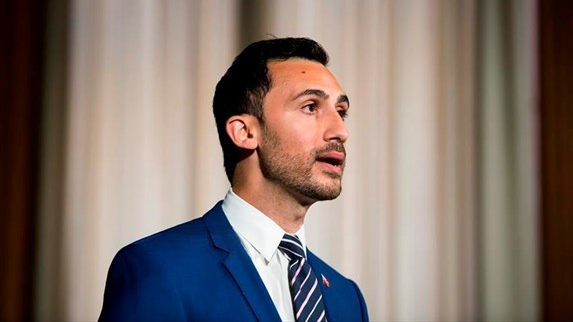
Anukul Thakur
The Ontario government will do away with academic streaming in Grade 9.
Stephen Lecce, Ontario’s minister of education, told Humber News on Tuesday systemic racism is part of the current education system and that it has to be eradicated.
Streaming forced students to choose between applied or academic tracks when they entered high school, and Lecce said the practice greatly affected Black students in determining post-secondary options
“It is clear there is systemic discrimination built within the education system, whether it be streaming of racialized students, suspensions overwhelmingly targeting Black and Indigenous kids, or the lack of merit-based diversity within our education workforce,” he said in email statement.
“Students, families and staff deserve an education system that is inclusive, accountable, and transparent, and one that by design, is set up to fully and equally empower all children to achieve their potential,” Lecce said.
“The government will move quickly and decisively to combat systemic racism so that every child — irrespective of the colour of skin, heritage, faith or ability — can have a fighting chance at success,” he said.
Ontario Premier Doug Ford said in a press conference on Monday it isn’t fair to ask a 14-year-old in Grade 9 to decide their educational pathway.
“We’re the only province in the entire country that does this, and it’s really not fair to certain groups of students,” Ford said.
The streaming process
Annie Kidder, the executive director and a founder of People for Education, described streaming as the process where students pick between academic or applied courses before starting high school.
“Applied courses are meant for kids that are on a path to go to colleges or to enter the workforce after they graduate from high school,” she said. “For the students who want to go universities they would have to take academic courses and then make more course choices in Grade 11 and 12.”
Kidder said streaming was introduced to support all kinds of students.
“The idea was to have students mix and match courses – one course in applied and few in academic but what ended up happening was kids didn’t mix and match,” she said.
Streaming created problems
“The most worrying thing was streaming really closed doors – once you were in applied it was hard to move to academic,” Kidder said.
She said streaming inhibits students from exploring different careers by making them take a linear path.
“We’ve to make sure that all students have a strong range of competencies and skills that will serve them as they take this non-linear path during their lives and if we narrow that too much, we’re only limiting their exposure to other possible careers.”
“There is evidence that kids in applied courses were more likely to fail, be less successful, and less likely to graduate,” she said.
A 2015 report from People for Education, found that students taking applied courses in Grade 9 were less likely to go to university and the students from low-income groups were more likely to enroll in applied courses.
Kidder pointed to another study done by Education Quality and Accountability Office (EQAO), that found out that no matter how students performed in Grade 3 and Grade 6 on the EQAO test, they are less likely to do well if they end up taking applied courses in Grade 9.
“We seem to be streaming certain kinds of students into applied courses and by doing that we’re setting them up for failure and not having the same chance at an array of choices when they graduate,” she said.
Kidder said the Black Lives Movement made challenging systemic racism in school boards unavoidable.
“People have been bringing this up for years and it is appalling streaming has been affecting Black students and BLM has shone a really big light in all of our systems and for all of us,” she said.
The Toronto District School Board (TDSB) and the Peel District School Board (PDSB) have nearly twice as many Black students than white students in applied courses owing to systemic racism and assumptions made in school systems, Kidder said.
A PDSB report finds the region’s public school teaching staff is 67 per cent white teaching staff representing only 17 per cent students that are white, a pattern that follows across school boards in Ontario.
“Being in a place where only a few people look like you or understand more about you is a problem,” she said.
The provincial government hasn’t yet explained what would replace the streaming model.
“It is worrying me when there are a lot of other things going on that we don’t seem to have a comprehensive plan from the Ontario government,” Kidder said.

